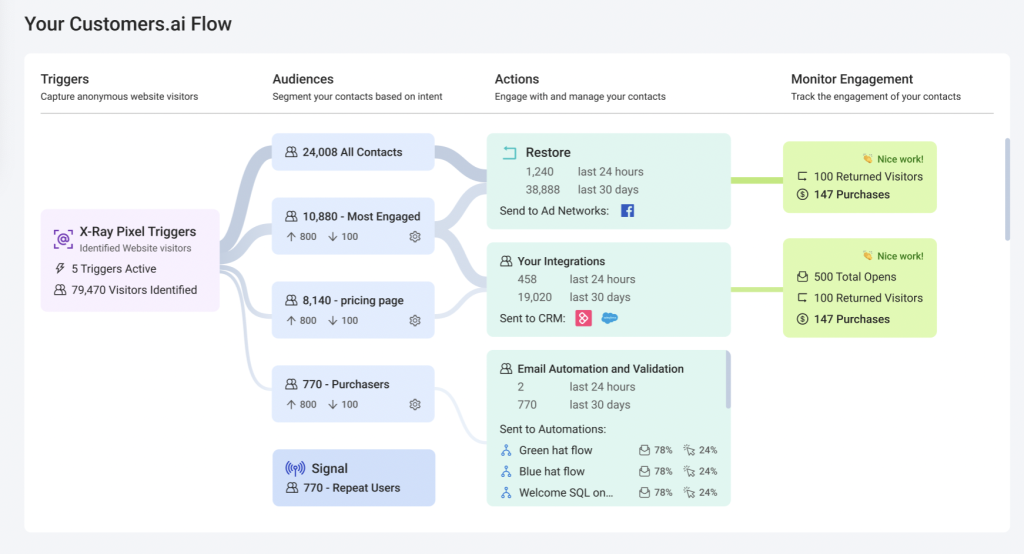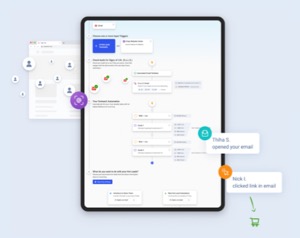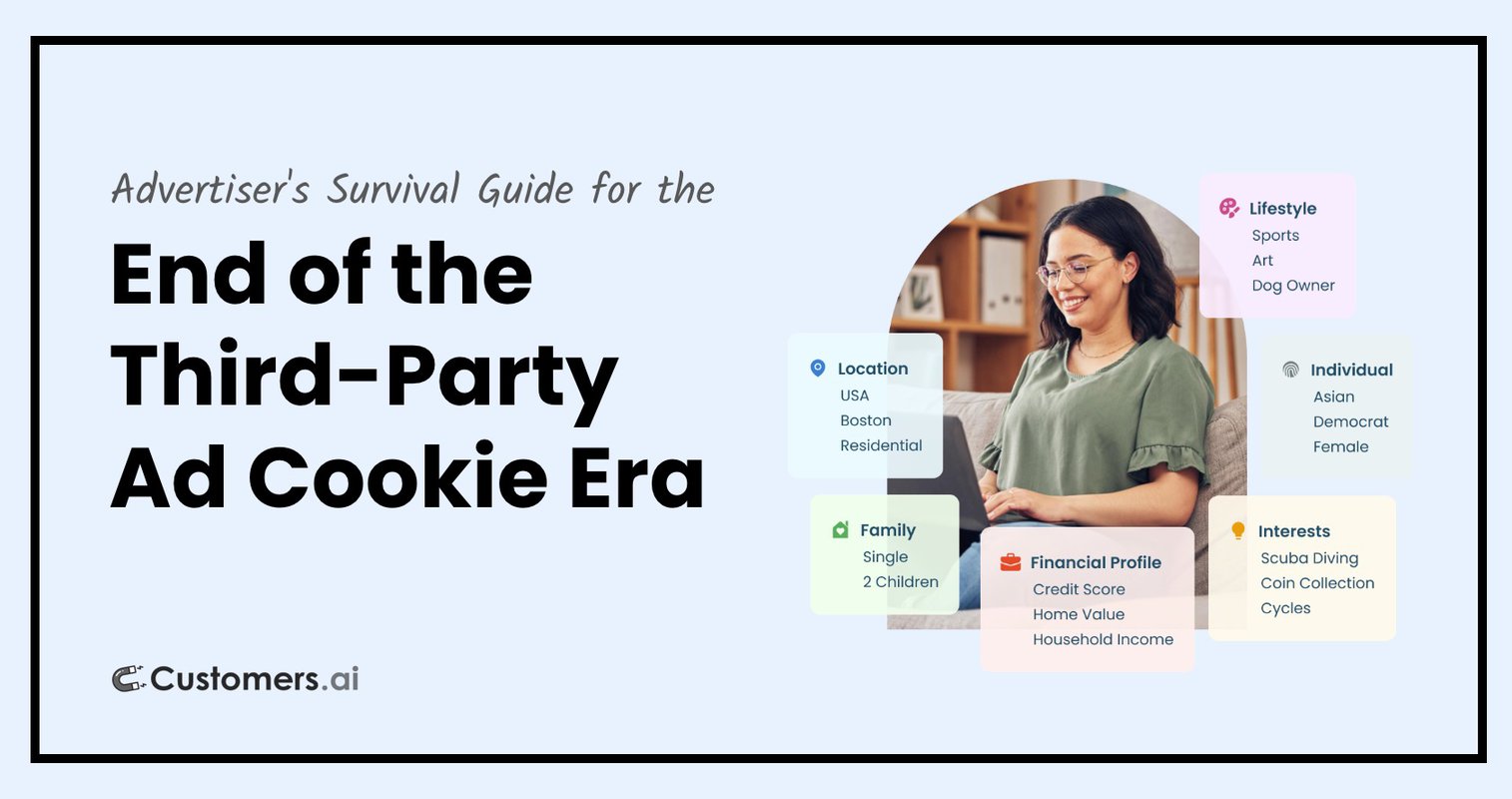It’s the year of the cookie and while we’ve had plenty of time to prepare for what we are calling the “end of the cookie era”, it feels like marketers still aren’t ready.
And it turns out it feels that way because well, they aren’t. According to Martech, 75% of marketers still rely heavily on cookies and another 64% plan to increase their spending on cookie-based activations this year.
It may seem kind of backwards, relying on a technology that’s being phased out, but the reality is that marketers need ad platforms for leads, customers, sales, and revenue.
That isn’t going to change.
What is going to change (and already has) is the ability to measure campaigns effectively, allocate budgets appropriately, and reach the right people in the right places.
The bad news is it’s only going to get more challenging.
Which is why we brought together our Founder and CEO Larry Kim and InfoTrust’s D2C Industry Team Manager Courtney Fenstermaker to discuss what advertisers need to do to survive this so called cookiepocolypse.
Convert Website Visitors into Real Contacts!
Identify who is visiting your site with name, email and more. Get 500 contacts for free!
Let’s jump into what they had to say.
Start Stockpiling Your First-Party Data
The demise of third-party cookies signals a return to first-party data supremacy – the data that you own and no one can take from you.
According to Kim, marketers and advertisers need to develop robust first-party data strategies to maintain and enhance customer engagement and targeting precision.
While that can sound overwhelming (and expensive), it’s actually easier said than done. Here are Kim’s tips for gathering and stockpiling your first-party data.
1. Invest in a Tracking Pixel to ID Visitors
In the wake of third-party cookie deprecation, tracking pixels are the solution for marketers aiming to gather actionable insights about their audience.
A pixel like Customers.ai Website Visitor ID X-Ray can help you not only identify up to 20% of your visitors but will also allow you to retarget, email, and add these visitors directly to your CRM.
Here are a few benefits of having a visitor tracking pixel in place:
- Direct Data Collection: Custom tracking pixels enable businesses to collect data directly from their website visitors without relying on third-party sources. This first-party data is more accurate, relevant, and compliant with privacy regulations.
- Enhanced Customer Journey Mapping: This is perhaps one of the biggest losses of the removal of cookies. But by implementing your own tracking solution, you can gain a comprehensive view of the customer journey across their digital ecosystem. Just like the old days, this detailed mapping allows for the identification of key touchpoints, preferences, and behaviors, enabling more effective targeting and optimization of the customer experience.
- Privacy Compliance and Trust: With growing concerns over privacy and data protection, custom tracking pixels offer a way to respect user consent while still gathering valuable insights. By controlling the data collection process, businesses can ensure transparency and build trust with their audience.
2. Use First-Party Data to Restore Ad Retargeting & Attribution
We’ve talked a lot here about retargeting (here, here, and here for instance).
The privacy changes over the past 5 years have all but decimated retargeting campaigns and this latest focus on cookies is only going to make it worse.
The cool thing is, first-party data makes retargeting work again!
We know that remarketing engagement is 2-3x higher than non-remarketing and certainly more cost effective.
By capturing visitor information directly on your website and pumping it into your remarketing campaigns, you can retarget like it’s 2019!
3. Create Advanced Audience Segments with Your First Party Data
Larry Kim’s third tip for navigating the end of the cookie era focuses on using first-party persistent identifiers to create sophisticated audience segmentations and connecting these segments to specific marketing actions.
Again, it’s actually much easier than it sounds!
Let’s use Customers.ai as the example again.
A visitor comes to your site, the tracking pixel is able to identity them.
You now know their name, email address, business role, company, LinkedIn profile, and much more.
Based on their actions, let’s say visiting your request a demo page, they are put into your existing automation for people who request a demo.
We are able to track if they opened the email, what other pages they might’ve visited, what actions they might have taken, and all of this is sent to your CRM.

Here’s another example.
A visitor comes to your site and reads a blog post about lead generation.
They are not a high-intent visitor so shouldn’t be put into the email automation but they are a great fit for a retargeting campaign focused around anyone who visited pages about lead generation.
The key here is using the first-party data you have to not just create sophisticated audience segmentations, but to connect these segments to specific marketing actions. The result is better targeting, better attribution, and more money.
It’s Time to Adapt to a Privacy-First World
While Larry Kim focused on some of the more tactical things you can do to capture first-party data, Courtney Fenstermaker offered a broader view of the issue, focusing on adapting marketing strategies in a privacy-centric landscape while maximizing data utility.
Here are Fenstermaker’s tips for doing just that:
1. Actioning Data with a Privacy Lense
While this tip might seem broad at first glance, it’s all about recognizing the gold mine we’re sitting on: our data.
Fenstermaker reminds us that, even in a world where privacy is king and data is being removed, there’s still a ton we can do with the data we have, from deep dives into analytics to fine-tuning our ad targeting. It’s really about seeing the full spectrum of possibilities and making the most of what we’ve got, without stepping on anyone’s privacy toes.
First off, she’s big on using data to get the lay of the land. What’s happening with our audience? Who’s engaging, who’s not, and why? This isn’t just number-crunching; it’s about telling the story of our users’ journey with our brand.
And then there’s A/B testing—our primary weapon for figuring out what works and what doesn’t, right there on our own turf.
That leads into how we can take our data game to the next level with modeling and AI. AI really has the ability to give us the edge we need to stay ahead. And when it comes to enriching our data, she’s all about mixing and matching datasets to get a fuller picture of our audience, which is pure gold for targeting.
Last but not least, what this is all really about is reaching our customers in ways they actually appreciate. It’s about reading the room (or the data) and knowing whether to slide into their emails, pop up in their social feeds, or nudge them with a push notification.
It’s this blend of savvy data use and genuine respect for privacy that can help us nail our marketing goals while keeping our audience’s trust intact.
2. Be Aware of Privacy Legislation Updates
Courtney Fenstermaker’s second tip may seem obviously but is actually one of the most challenging parts of the whole privacy issue.
Staying on top of privacy changes from state to state is almost impossible.
Not with the IAPP US State Privacy Legislation Tracker.
The tracker can help marketers staying on top of privacy laws in the US quickly and easily. So, whether you’re in Pennsylvania or pitching to folks in California, this resource is your go-to for navigating the complex world of privacy laws without missing a beat.
3. Question Your Data & Assess Your Risk
The challenge is real: identifying users and tailoring marketing strategies has never been trickier, potentially dialing down the effectiveness of our tactics.
Yet, within this challenge lies an opportunity to rethink and revamp how we connect with our audience. It’s about diving deeper, beyond the surface data, to truly understand and segment our customer base, focusing on creating more meaningful connections.
Whether it’s leveraging AI, modeling, or just getting smart with the data we have, the goal is to refine our approach to reach even those who remain elusive.
This strategic shift isn’t just about adaptation; it’s about reimagining our engagement to keep pace with the industry’s evolution, ensuring our marketing remains relevant and impactful.
Additionally, a practical tip is to simply ask, “What now?”
Dive into your website and do a full inventory.
Pinpoint which platforms and tools you’re using and how they’re affected by the new privacy rules.
Often, we overlook the extent of our reliance on various technologies, from analytics to customer engagement tools. Understanding which ones might be at risk helps clarify how prepared (or not) your business is.
Fenstermaker calls it a data compliance or cookie assessment—a deep dive to see where you stand and how to adjust.
This webinar really was a goldmine of tactics for marketers struggling with the cookie apocalypse.
The key here is to adapt and shift.
It’s all about doubling down on first-party data, putting privacy at the heart of everything we do, and using tech to really get what makes our customers tick.
With Larry Kim and Courtney Fenstermaker guiding the way, we’ve got ourselves a solid game plan to keep our marketing strong, legal, and totally on point in this new era.
Interested in learning more about how Customers.ai is helping marketers adapt their strategies and future-proof their marketing campaigns?
Contact our team for more information or install the Customers.ai Website Visitor ID X-Ray pixel right now.
It’s free, it takes less than 90 seconds, and you can capture up to 5,000 contacts for now charge.

See Who Is On Your Site Right Now!
Get names, emails, phone numbers & more.
Try it Free, No Credit Card Required
Important Next Steps
- See what targeted outbound marketing is all about. Capture and engage your first 500 website visitor leads with Customers.ai X-Ray website visitor identification for free.
- Talk and learn about sales outreach automation with other growth enthusiasts. Join Customers.ai Island, our Facebook group of 40K marketers and entrepreneurs who are ready to support you.
- Advance your marketing performance with Sales Outreach School, a free tutorial and training area for sales pros and marketers.
